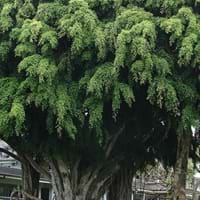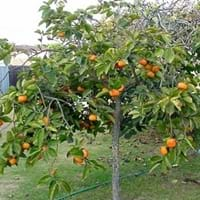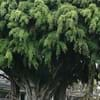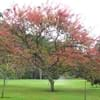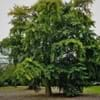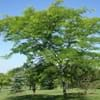Life Span
Perennial
Perennial
Origin
Southern Asia, Southeastern Asia, India, Melanesia, Australia
China, Japan
Types
Not available
Not Available
Habitat
Temperate Regions, tropical environments, Tropical regions
Subtropical climates, Warmer regions
USDA Hardiness Zone
10-15
6-10
Sunset Zone
H1, H2, 13, 23, 24
H1, 6, 7, 8, 9, 12, 14, 15, 16, 18, 19, 20, 21, 22, 23, 24
Habit
Thicket/Colonizing
Pyramidal
Flower Color
Not Available
Light Yellow
Flower Color Modifier
Bicolor
Bicolor
Fruit Color
Yellow, Red, Green, Pink, Orange Red, Black
Orange
Leaf Color in Spring
Dark Green
Green
Leaf Color in Summer
Dark Green
Green
Leaf Color in Fall
Dark Green
Yellow, Burgundy, Orange Red
Leaf Color in Winter
Dark Green
Not Available
Leaf Shape
Elliptic
Ovate
Plant Season
Spring, Summer, Fall, Winter
Summer, Fall, Winter
Sunlight
Full Sun, Partial Sun, Partial shade
Full Sun, Partial Sun
Growth Rate
Very Fast
Medium
Type of Soil
Loam, Sand
Clay, Loam
The pH of Soil
Acidic, Neutral, Alkaline
Acidic, Neutral
Soil Drainage
Well drained
Well drained
Tolerances
Drought, Full Sun, Shade areas, Variety of soil types
Not Available
Where to Plant?
Ground
Ground
How to Plant?
Cuttings, Layering
Seedlings, Stem Planting
Plant Maintenance
Low
Medium
Watering Requirements
Water carefully
Requires watering in the growing season, Water occasionally
In Summer
Lots of watering
Lots of watering
In Spring
Moderate
Moderate
In Winter
Average Water
Average Water
Soil pH
Acidic, Neutral, Alkaline
Acidic, Neutral
Soil Type
Loam, Sand
Clay, Loam
Soil Drainage Capacity
Well drained
Well drained
Sun Exposure
Full Sun, Partial Sun, Partial shade
Full Sun, Partial Sun
Pruning
Remove damaged leaves, Remove dead branches, Remove dead leaves
Remove damaged leaves, Remove dead branches, Remove dead leaves, Requires very little pruning
Fertilizers
10-10-10, All-Purpose Liquid Fertilizer, Any balanced general purpose fertilizer, slow-release fertilizers
General garden fertilizer
Pests and Diseases
Red blotch, Soft scales
Mealybugs
Plant Tolerance
Drought, Full Sun, Shade areas, Variety of soil types
Not Available
Flowers
Insignificant
Insignificant
Flower Petal Number
Not Available
Single
Foliage Texture
Medium
Medium
Foliage Sheen
Glossy
Glossy
Self-Sowing
Yes
Not Available
Allergy
Rhinoconjunctivitis, wheezing
no allergic reactions
Aesthetic Uses
Bonsai, Cottage Garden
Not Used For Aesthetic Purpose
Beauty Benefits
Reduce Bruises
Not Available
Environmental Uses
Air purification
Air purification
Medicinal Uses
Antibacterial, Aphrodisiac, Dysentry
No Medicinal Use
Part of Plant Used
Bark, Fruits, Leaves, Root
Fruits
Other Uses
Container
Culinary use, Used As Food
Used As Indoor Plant
Yes
No
Used As Outdoor Plant
Yes
Yes
Garden Design
Container, Feature Plant, Hedges, Houseplant, Screening / Wind Break, Shade Trees, Topiary / Bonsai / Espalier, Tropical
Feature Plant, Fruit / Fruit Tree, Topiary / Bonsai / Espalier
Botanical Name
FICUS benjamina
DIOSPYROS kaki 'Fuyu'
Common Name
Weeping Fig, Benjamin's fig, Ficus tree
Asian Persimmon, Fuyu Persimmon, Japanese Persimmon, Kaki
In Hindi
रो अंजीर
Fuyu ख़ुरमा
In German
Birkenfeige
Fuyu Persimmon
In French
figuier pleureur
Fuyu Persimmon
In Spanish
higo llorón
Fuyu caqui
In Greek
κλάμα σύκο
Fuyu Λωτός
In Portuguese
chorando fig
Fuyu Persimmon
In Polish
płacz rys
Fuyu Persimmon
In Latin
Plorans ficum
Persimmon Impromptus
Phylum
Magnoliophyta
Tracheophyta
Class
Magnoliopsida
Magnoliopsida
Family
Moraceae
Ebenaceae
Clade
Angiosperms, Eudicots, Rosids
Angiosperms, Asterids, Eudicots
Tribe
Ficeae
Not Available
Subfamily
Not Available
Not Available
Number of Species
Not Available
Season and Care of Weeping Fig and Fuyu Persimmon
Season and care of Weeping Fig and Fuyu Persimmon is important to know. While considering everything about Weeping Fig and Fuyu Persimmon Care, growing season is an essential factor. Weeping Fig season is Spring, Summer, Fall and Winter and Fuyu Persimmon season is Spring, Summer, Fall and Winter. The type of soil for Weeping Fig is Loam, Sand and for Fuyu Persimmon is Clay, Loam while the PH of soil for Weeping Fig is Acidic, Neutral, Alkaline and for Fuyu Persimmon is Acidic, Neutral.
Weeping Fig and Fuyu Persimmon Physical Information
Weeping Fig and Fuyu Persimmon physical information is very important for comparison. Weeping Fig height is 2,440.00 cm and width 3,050.00 cm whereas Fuyu Persimmon height is 550.00 cm and width 550.00 cm. The color specification of Weeping Fig and Fuyu Persimmon are as follows:
Weeping Fig flower color: Not Available
Weeping Fig leaf color: Dark Green
Fuyu Persimmon flower color: Light Yellow
- Fuyu Persimmon leaf color: Green
Care of Weeping Fig and Fuyu Persimmon
Care of Weeping Fig and Fuyu Persimmon include pruning, fertilizers, watering etc. Weeping Fig pruning is done Remove damaged leaves, Remove dead branches and Remove dead leaves and Fuyu Persimmon pruning is done Remove damaged leaves, Remove dead branches, Remove dead leaves and Requires very little pruning. In summer Weeping Fig needs Lots of watering and in winter, it needs Average Water. Whereas, in summer Fuyu Persimmon needs Lots of watering and in winter, it needs Average Water.
